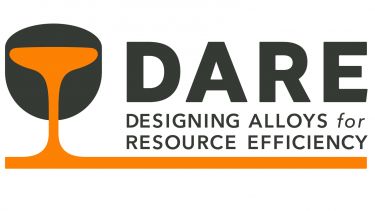Grain boundary segregation
Extending the crystal plasticity model [2.1] to investigate how grain pairs interact, to increase our understanding of how deformation traverses interfaces.
In the general case for bcc and fcc metals we hoped to calculate how the angle between the interfacial plane orientation and the stress axis influences deformation movement across interfaces. The results from these studies were exploited in the crystal-level modelling of steel microstructures in order to rank microstructures for performance.
Understanding deformation transport would give us a better understanding of deformation processing of the RE-free alloys developed in RT1.3. The key was to avoid twinning during the early stage of hot deformation by careful consideration of the strain path, temperature and rate. Experimental work was also undertaken to examine the microstructures/microtextures produced, especially the effect of recrystallisation, and how this knowledge might be used in process optimisation.
With a knowledge of how deformation translates from grain to grain, we could look at the processing of TWIP and multiphase steels to produce optimal textures for high strength or high ductility materials. [1.1]
We also hoped that this work would improve our understanding of hard precipitates (carbides) at grain boundaries.

Designing Alloys for Resource Efficiency (DARE)
Addressing future resource challenges for alloys in manufacturing.
